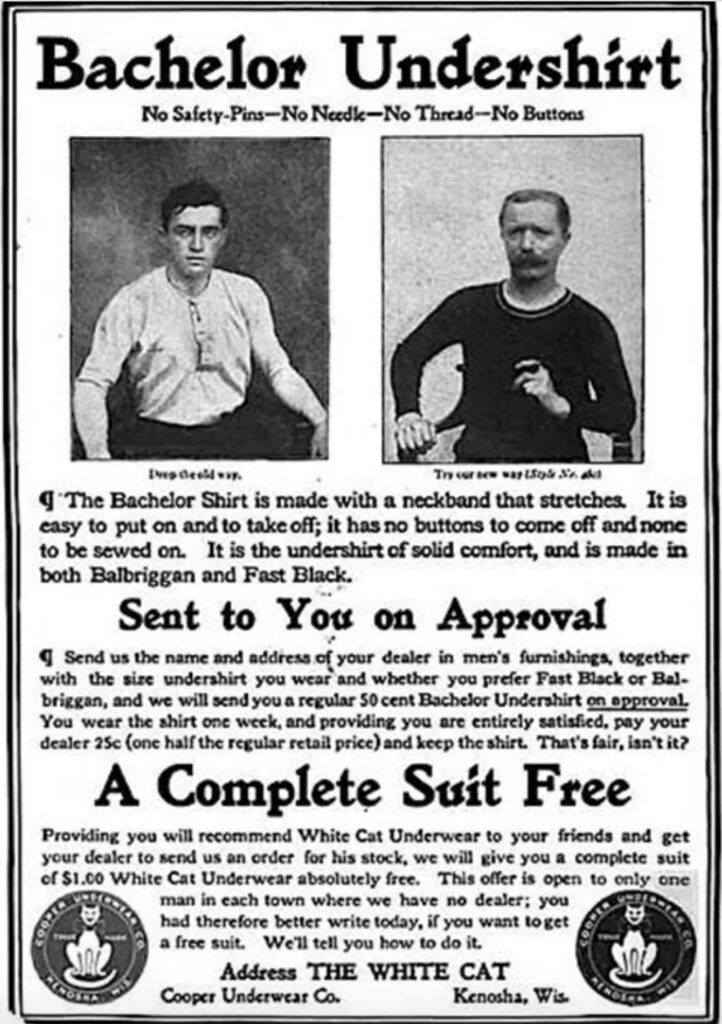The evolution of the T-Shirt
It’s a wardrobe staple so ubiquitous and basic that it’s surprising to even think of it as having been “invented”.
But the humble t-shirt is a relatively recent innovation, and it its possible to trace its evolution from undergarment to outerwear.
Loose-fitting, t-shaped garments worn as underwear date back to the Middle Ages, but the history of the t-shirt as we know it today began in the 1800s, when jumpsuits and long johns began being adapted for comfort. Sailors and laborers were known to cut jumpsuits in half to stay cool, and the practical pieces caught on. By 1898, t-shirts were beginning to be manufactured on an industrial scale.
In the early 20th century, the Cooper Underwear Company (now “Jockey”) marketed t-shirts as a convenient wardrobe staple for bachelors who couldn’t sew on buttons. Also taking note of their practicality, the US Navy began issuing them as standard undershirts in 1913.
It is believed that the first time the word “t-shirt” appeared in published writing was in F Scott Fitzgerald’s novel, This Side of Paradise. It was added to the Merriam-Webster dictionary in 1920. Later on in the 20s, when central heating was widely introduced to homes, undershirts that were usually made of wool started being made of cotton.
T-shirts remained an undergarment until after the Second World War. In the 1940s, veterans popularized the look of a plain t-shirt worn with trousers or jeans, and high-schoolers were quick to emulate the style. In the 1950s, two iconic film roles catapulted the “t-shirt as outerwear” look to stardom- Marlon Brando as Stanley Kowalski in A Streetcar Named Desire (1950), followed by James Dean in Rebel Without a Cause (1955). Both protagonists wore fitted white t-shirts, looks that remain iconic to this day.
These moments captured the spirit of a brewing rebellious, counter-cultural moment, and it didn’t take long for t-shirts to be emblazoned with decorations, designs, and- importantly- slogans.
(The first “slogan T-shirt” is attributed to presidential candidate Thomas E Dewey, who distributed shirts reading “Do it With Dewey”).
The 1960s brought the invention of plastisol ink, which allowed for easy screen-printing and dyeing. T-shirts became billboards for activist slogans, rock band logos, and any other form of self expression.
Today, over ninety-five percent of Americans are t-shirt wearers. Of those, 87% report having at least one t-shirt they are keeping solely for sentimental reasons.


